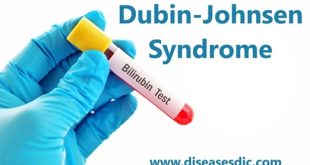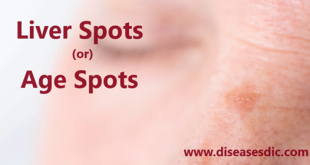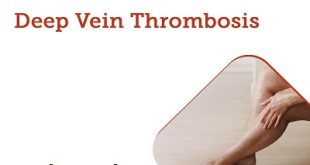Definition
Darier disease (DAR/ Darier disease/ Dyskeratosis Follicularis / Darier–White disease/ Keratosis follicularis) is a rare, often chronic, genetic disorder characterized primarily by non-contagious skin changes. Darier disease or Keratosis Follicularis is an autosomal disorder, meaning that a single gene inherited from one parent causes this disease. Like Hailey-Hailey disease, Darier Disease is also grouped as a hereditary acantholytic dermatosis. Skin changes commonly start in adolescence. Flare-ups of Darier Disease or Keratosis Follicularis are triggered by tight-fitting clothes, humidity, stress and sun exposure. Darier disease affects both men and women equally and is not contagious.
Majority of the patients develop symptoms of Darier Disease or Keratosis Follicularis before the age of 30. Many patients can also have this disease in a mild form of which they are not aware of. Individuals with severe Darier Disease have chronic relapsing-remitting symptoms. In some patients, the symptoms may resolve spontaneously. The rashes or lesions of Darier Disease or Keratosis Follicularis worsen upon exposure to sun and sometimes by corticosteroid use. Patients with Darier Disease or Keratosis Follicularis can have flare ups of this condition with bacterial infections. Patient’s overall health commonly will be good irrespective of the severity of this condition.
Pathophysiology
Mutations in the gene ATP2A2 on chromosome 12q23-24, which codes for sarco-endoplasmic reticulum Ca2+ ATPase, leads to both acantholysis and apoptosis. Defects in Ca2+ sequestration from the cytosol into the lumen of ER damages the normal processing of junctional-adhesion proteins such as impaired synthesis, maturation, or function of the desmosomes in epithelial cells.
The mechanisms by which specific ATP2A2 mutations impact the function of the ATP2A2 protein have been investigated using an in vitro model. The investigators found that the resultant transfected cells showed defects in ATP2A2 protein expression, ATP hydrolysis, calcium transport and calcium binding. Thus diverse biochemical mechanisms are responsible for altered protein function.
Causes of Darier disease
Darier disease is caused by mutations in the ATP2A2 gene. This gene gives the body instructions to make an enzyme known as SERCA2. This enzyme helps control the level of calcium ions inside cells. Calcium ions act as signals for many cell functions needed for normal development.
Mutations in the ATP2A2 gene affect the amount or function of the SERCA2 enzyme. This enzyme is expressed throughout the body, and it is unclear why mutations in this gene affect only the skin.
The linear form of Darier disease is also caused by ATP2A2 gene mutations, but these mutations are acquired and arise in only some body cells after conception (somatic mutations).
Darier disease symptoms
Darier disease is a skin condition characterised by wart like blemishes on the body. These are usually coloured (yellow-brown or brown), hard to the touch, mildly greasy and can emit a strong odour.
Common sites for blemishes are the scalp, forehead, upper arms, chest, back, knees, elbows, and behind the ear. Pits (depressions in the skin) may be present in the palms of the hands and soles of the feet. The mucous membranes may also be affected including the mouth (palate), inside the cheeks, gums, and throat, the vulva and rectum.
Red and white streaks in the nails, with irregular texture, can occur.
The symptoms usually appear in late childhood to early adulthood. A person with the condition may have ‘flare-ups’ where more symptoms are present and periods with fewer blemishes.
Other characteristics may include:
- Mild intellectual disability
- Epilepsy
- Depression
- Learning and behavioural difficulties.
Another form of Darier disease is the linear or segmental form which has blemishes on localised areas of the skin; these blemishes are not as widespread as typical Darier disease and may only occur on one side of the body.
Typical sign of Darier’s disease in lower back area
Complications
Most affected patients develop signs before the age of 20 years.
- Many have mild and unnoticed Darier disease.
- More severe disease may have a chronic relapsing-remitting pattern.
- The signs may clear up altogether.
Flare-ups may be caused by any of the following factors.
- Exposure to sunlight or heat.
- Topical steroid use
- Bacterial infection, usually Staphylococcus aureus
- Herpes simplex infection – including severe Kaposi varicelliform eruption (see eczema herpeticum).
In most patients, general health remains good regardless of the severity of the disease. However, it can have a major impact on psychosocial functioning.
Darier’s disease in nail
Diagnosis and test
The doctor will ask about your symptoms and health history. A physical exam will be done. It will focus on the skin. This is often enough to make the diagnosis.
- The skin may also be tested. This can be done with a biopsy. A small sample of skin will be removed. It will be sent to a lab for testing.
- A blood test may also be done to look for signs of the faulty gene.
Treatment and medications
Oral retinoids have been reported to be effective treatments. However, prolonged use of oral retinoids can cause significant side effects and individuals using these drugs need to be monitored closely by their physicians. Symptoms of the disease will return if the retinoid therapy is stopped.
Topical retinoids such as tazarotene, isotretinoin, and adapalene have been shown to be effective in some individuals. Tacrolimus ointment, a calcineurin inhibitor, has been helpful in moderating symptoms in some patients.
Surgical treatments, including dermabrasion, carbon dioxide laser, and erbium YAG laser, may be effective in treating localized areas.
Antibacterial washes, antiseptic creams, and oral antibiotics may help with odor and skin infections.
Using high factor sunscreen, avoiding sun exposure, and wearing cotton clothing may help reduce flare-ups of the disease.
Other useful treatments:
Laser treatment or resurfacing of very thick areas has been reported to be successful and may be offered by some dermatology departments. Surgical excision or Dermabrasion (removing surface layers) of very thick areas has been used occasionally.
Photodynamic therapy, a type of photochemotherapy delivered in dermatology departments, that is used to treat other skin conditions (e.g. Actinic Keratosis) has been used effectively in some cases of Darier disease. Botulinum toxin injections has been reported in a small number of patients and may be helpful for severe Darier disease. This can be helpful in reducing sweating and can be discussed with your dermatologist.
Prevention of Darier disease
The avoidance of triggers is paramount in preventing exacerbations of Darier disease.
- Triggers can include sunlight, heat, occlusive clothing, and friction. Patients should avoid sun exposure, wear loose clothing, use sunscreen, and employ proper hygiene practices.
- Cleaning with antiseptic solutions can prevent infections.
- As Darier disease is inherited in an autosomal dominant fashion, patients should be offered genetic counseling
 Diseases Treatments Dictionary This is complete solution to read all diseases treatments Which covers Prevention, Causes, Symptoms, Medical Terms, Drugs, Prescription, Natural Remedies with cures and Treatments. Most of the common diseases were listed in names, split with categories.
Diseases Treatments Dictionary This is complete solution to read all diseases treatments Which covers Prevention, Causes, Symptoms, Medical Terms, Drugs, Prescription, Natural Remedies with cures and Treatments. Most of the common diseases were listed in names, split with categories.







